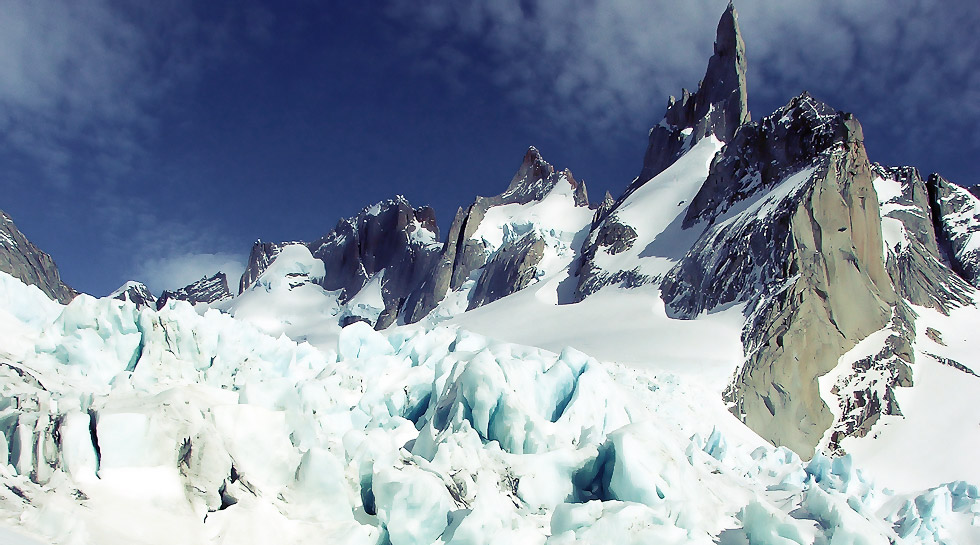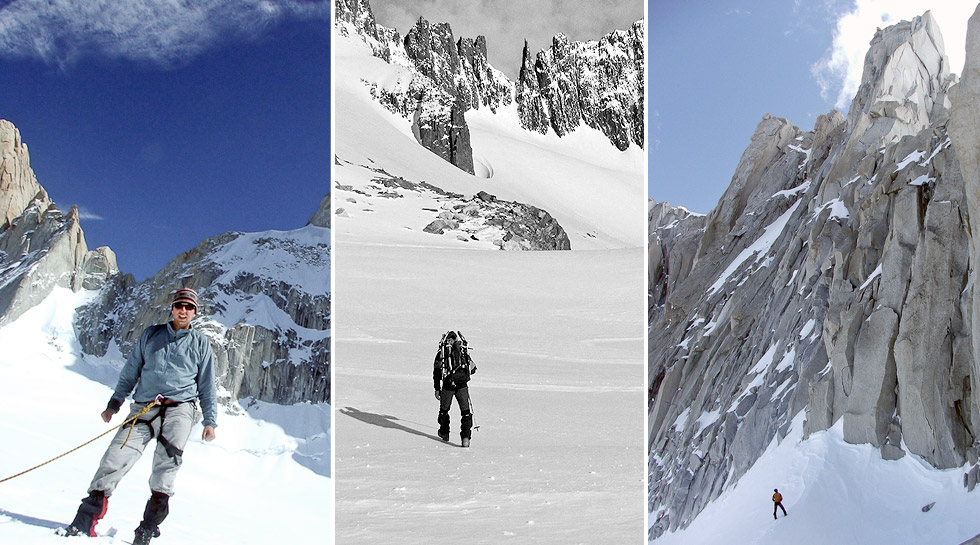"It's called the Guillaumet pass. It's generally used by climbers. There's a little crevasse danger but as long as the weather holds it'd be fine. You'd be right underneath Monte Fitz Roy."
The e-mail I'd opened was from a 29-year old Argentinean mountain guide, Pedro Fina. I'd first met Pedro in 2004, when he was one of two guides I'd had on a 4-week trekking expedition in South America. During that trip, we'd climbed a glacier beside two of the great peaks of the Patagonian Andes, Monte Fitz Roy and Cerro Torre, and traversed a small portion of the Southern Patagonian Ice Cap, a flat expanse of thick ice - 13,000km2 - that flows west from the mountains and down into the Pacific Ocean.
My objective this year was to get much closer to the mountains, to scratch an exploratory itch I have for Patagonia and to research new treks for a guidebook I was writing to Argentina's Los Glaciares National Park. I'd settled on a shorter expedition around Monte Fitz Roy, connecting small cirques and climbers' trails with pocket glaciers and high bealachs to create a trek that I hoped would offer me the finest views possible of the Fitz Roy massif.
"I'll pick you up at 7am. There's a good weather forecast for the next couple of days and we should take advantage of it whilst we can."
I'd only been in Argentina a day when Pedro suggested we should leave the following morning. Neither of us had any desire to be caught out in a Patagonian storm. The weather in Patagonia is commonly said to be amongst the worst in the world. Gregory Crouch, in his book, 'Enduring Patagonia', describes how dark storm fronts that begin life deep in the Pacific Ocean rampage across the sea uninterrupted, the cold and wet air picking up moisture and gaining in speed as it heads towards a thick belt of low pressure, termed a circumpolar trough, ringing Antarctica. When this trough has expanded over Patagonia, as is all too often the case, the storms are dragged kicking and screaming over the Andes first. It is not uncommon to encounter wind speeds of 160 kph. When this is the case, the last place you'd want to be is up in the mountains where, as Greg quotes US climber Jim Donini in his book, "survival is not assured".
It was this sobering thought that occupied my mind when, two days later, Pedro and I stood atop the 1700 m high Paso Cuadrado and prepared to descend 400 m of blue, translucent ice to reach the remote and heavily-crevassed glacier we could see far below us.
We had climbed the 200 m to Paso Cuadrado that morning, after ascending 1000 m the day before from a private campsite just outside Los Glaciares National Park and spending a dry, cold night beside a huge, black rock called Piedra Negra. Two off Pedro's friends spent the night with us, shivering without sleeping bags as they waited to attempt a nearby peak, Aguja Guillaumet.
By 11.00am Pedro's friends could be a world away. Having carefully descended the ice slope we'd swapped crampons for snow shoes and headed uphill towards the Fitz Roy Norte Glacier. A huge jumble of ice towers, or seracs, spilled out of a higher basin as the glacier broke up and made its way down valley. Giving this icefall a wide berth we traversed instead beneath a jagged bergschrund that had formed as the ice had torn itself away from the huge granite walls of Aguja Mermoz. Rock-fall was a distinct possibility and more than a few deep breaths were taken before we passed the seracs and could cut back onto the upper part of the glacier. As we did so, everything underfoot turned to pristine white.



















